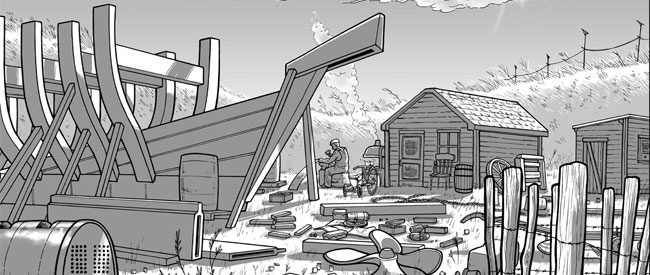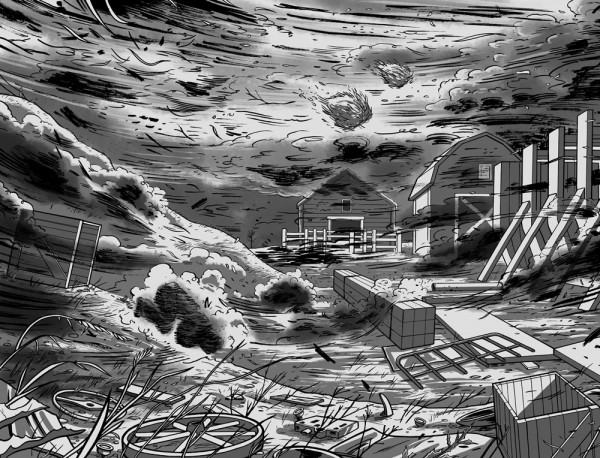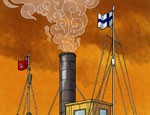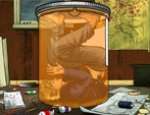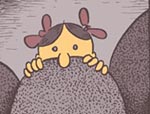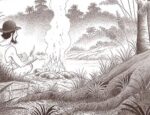Dustship Glory, set in the Canadian dustbowl of the 1930s, might lack the narrative pyrotechnics of Look Straight Ahead, but it’s a compelling character study delivered by a supremely confident storyteller.
Elaine M Will’s Look Straight Ahead was one of the most eye-opening graphic novels I read last year. A semi-autobiographical look at an adolescent mental breakdown, it used a virtuoso range of comics techniques to depict the experience vividly from the inside.
So when Will started to hint at the development of a ‘secret project’ a while ago, I was instantly intrigued. Eventually she spilled the beans: it’s a four-part adaptation of Dustship Glory – a 1986 novel by Canadian writer Andreas Schroeder.
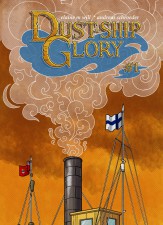 The book tells the story of Damanus ‘Tom’ Sukanen, a Finnish immigrant farmer who responded to the economic slump and drought conditions that laid waste to the Canadian prairies in the 1930s by building a full-sized ship in his farmyard, hundreds of miles from the sea.
The book tells the story of Damanus ‘Tom’ Sukanen, a Finnish immigrant farmer who responded to the economic slump and drought conditions that laid waste to the Canadian prairies in the 1930s by building a full-sized ship in his farmyard, hundreds of miles from the sea.
The creative choices involved in adapting work from one medium to another always fascinate me, but in the first few pages of Dustship Glory #1, it looked like Will had made a bit of a false step by deviating from the start of the novel to present a bit of a show-and-tell.
After the versatile storytelling of Look Straight Ahead, the scene-setting opening is unexpectedly stodgy; it delivers some useful social history and background to the grim environment in which Tom and his fellow farmers are living, but it does so in a slightly on-the-nose way.
However, while those opening pages might lack a bit of dramatic energy, they’re kept afloat by the confident clarity of Will’s artwork; after the diversity of styles she used in Look Straight Ahead, here she employs a much more disciplined clear-line style. And once we get past that initial info-dump, we’re soon back into the confident storytelling that characterised her earlier book.
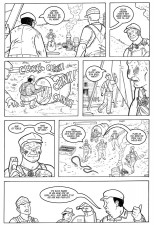 We’re introduced straight away to Sukanen, the star of the show, as a group of local farmers come both to ridicule his shipbuilding efforts and, perhaps more understandably, to take him to task for allowing weeds to grow unhindered on his land – weeds that are spreading to their already struggling farms.
We’re introduced straight away to Sukanen, the star of the show, as a group of local farmers come both to ridicule his shipbuilding efforts and, perhaps more understandably, to take him to task for allowing weeds to grow unhindered on his land – weeds that are spreading to their already struggling farms.
The character of Tom Sukanen is clearly at the heart of Dustship Glory, and within those few pages, through his visual depiction, his speech and his actions, we get a real sense of his strength, in both physique and character. Wills’s weighty rendition of Sukanen allows him to exert the gravity that will hold the book together.
We learn a little more about him through the investigations of a reporter from a local city newspaper – not the most original device, but a time-honoured and effective one, given support by Wills’s strong evocation of place and character.
It’s through the reporter’s visit to the local pub (a vivid depiction of small-town parochialism and distrust) that we learn more about some of Sukanen’s other dimensions. The locals see him as an eccentric weirdo, obsessed with the moon and the notion of his enemies being loathsome ‘Egyptians’.
However, he’s also a highly resourceful inventor: we hear of a motorised sled and a water-powered clock. But we then learn that he’s planning to take his ship somehow on an apparently impossible voyage to the ‘fertile crescent’ of Mesopotamia – between the rivers Tigris and Euphrates – where civilisation put down its roots. When the reporter visits Sukanen, the latter’s enigmatic responses raise more questions than they answer.
The visit coincides with a dust-storm, which allows Will to indulge her urge for stylistic variety, despite her efforts to keep the storytelling in Dustship Glory as straightforward as possible. As well as the more textured double-page spread of the farm engulfed by the storm, she also plays with layouts and panel borders to indicate the gradual return of calm after the tempest passes.
While this first issue might lack the narrative pyrotechnics of Look Straight Ahead, it’s a compelling character study in the hands of a supremely confident storyteller. It’s impossible to read without wanting to know more about the complexities of Tom Sukanen – and wanting to see how Elaine M Will brings them to life on the page.
Elaine M Will (W/A) • Cuckoo’s Nest Press, $3.95 (print) or $0.99 (digital), May 2014





